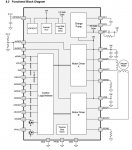Hi
I'd like to control the speed of a bidirectional motor with pwm.
1) Which circuit or module do I need? I usually work with the 18M2.
2) Should be posible to implement it with a CHI035?
With this board I know how to implement a bidirectional motor, and how to implement a unidirectional motor with pwm. But not both at once.
I'd like to control the speed of a bidirectional motor with pwm.
1) Which circuit or module do I need? I usually work with the 18M2.
2) Should be posible to implement it with a CHI035?
With this board I know how to implement a bidirectional motor, and how to implement a unidirectional motor with pwm. But not both at once.

